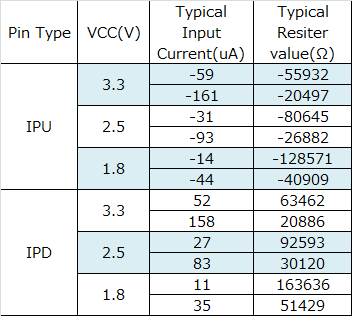Hi TI Experts,
Please let me confirm the following question.
[Question.1]
Would you please provide the data of the typical/maximum/minimum internal pull-up/down value for C5535 all pins which has IPU/IPD?
Typical:
Maximum:
Minimum:
[Question.2]
Can we think that all IPU/IPD supported pins the same values as above?
If you have any questions, please let me know.
Best regards.
Kaka


